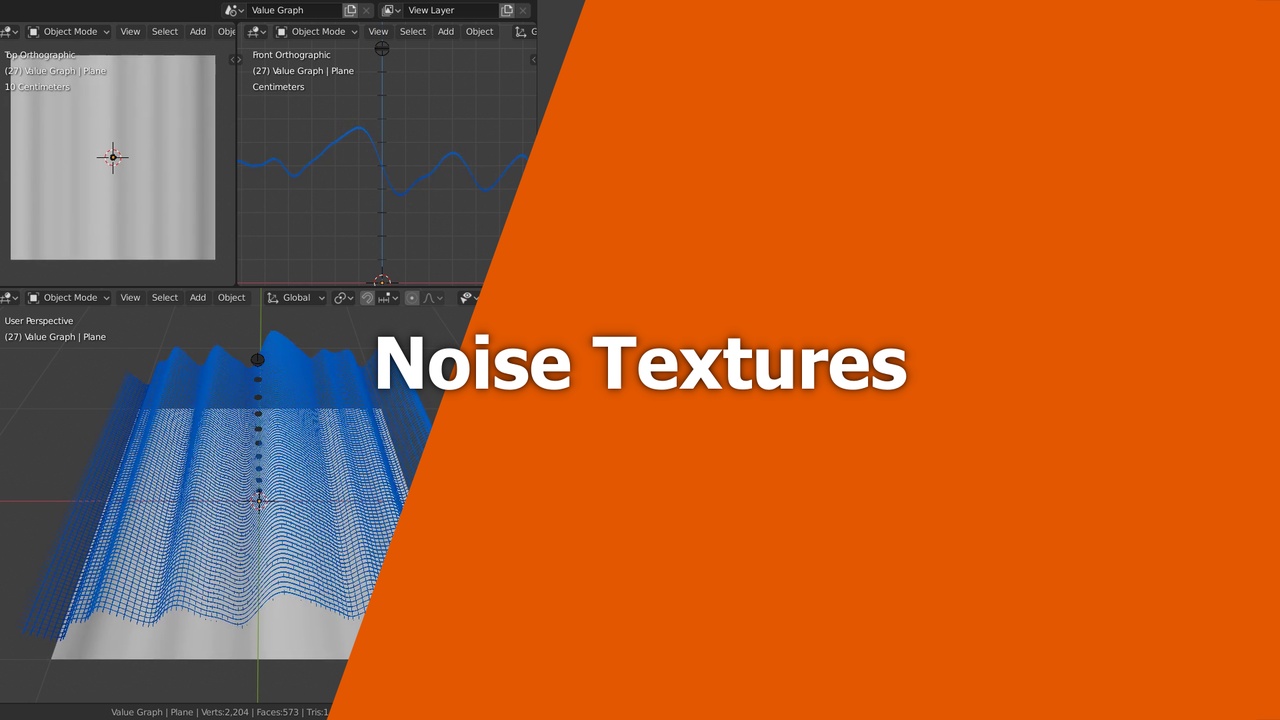
Login to view this content
Join Blender Studio for just €11.50/month and get instant access to all of our training and film assets!

Noise Textures
You can get the file for the Value Graph Tool here: https://cloud.blender.org/p/procedural-shading/5f075c60f11c51bf02b95fa1
18 comments

What happened with Musgrave texture? It was removed later. I was just curious why, and if it can be achieved with the other noises.

@Leslie Solorzano the musgrave texture has essentially been merged into the regular Noise texture node. It's available in the form of new noise types.

This visualisation tool you have created is brilliant, it makes it so much easier to understand what is going when you change a value.

@Simon Thommes I have one query not related to this but you know like...in texture baking of snow character in Blender Studio live stream by @Julien Kaspar ....he separated the head, hands, and remaining body for baking, and it's DONE but the issue is how I can apply those baked textures to same object where the whole character is one mesh not separated but we have a different diffuse map, roughness values of character..so I hope I cleared the point..so please help me out....?

@Anmol Krishna Sorry, but this is very much off-topic. This depends on the UV layout. If previously each object had their own UV space and the merged character needs a shared UV space I would suggest using UDIMs.

@Simon Thommes ok, so how can I import UDIMs, like of wanna use diffuse map color right with 3 maps of the head, body, and fingers then how is it going to be reflected or applied in shading nodes as we are going to add "Image Textures" of a bunch of 3 and having same base color diff maps of same mesh...?

Hey Simon, i can't find this file any where can you please put another link here?

@Seif Hussam In the description of this video you can find the link to the tool and there you can simply click on the Download button.

Hey Simon, this is a great course! I am having some trouble following the technical aspects of procedural shading and am wondering if there are files that we can explore on this chapter like the file created for the color vectors. I am trying to explore the texture nodes explained in this video in some of my own scenes, but am having trouble just getting started (lots of pink objects :) Could we also explore the file used in this video?

@higgi270 Of course, I usually link to the files used in the video description. This here is the value graph tool that I built to visualize texture values: https://cloud.blender.org/p/procedural-shading/5f075c60f11c51bf02b95fa1 In the chapter on value control I explain it a bit more. I hope that helps :)

@Simon Thommes Oh shoot, sorry. I checked back to the chapter and it was indeed linked to the bottom of the video. This is exactly what I was looking for. Thanks!

Quick tip if your computer chokes on rendering the graph. Make the ZX and ZY planes selectable, then select each and reduce the array modifier fixed counts to a lower value until your computer can handle the computations. Mine still struggles with only 10 planes each heh :S

hi, can you kindly explain a bit about using one Perlin texture onto other which you mentioned as octaves?

Hi Simon, can you tell me why the color is not showing up in my viewport?
https://drive.google.com/file/d/1Q6x7f6_FjWDTBfvc424vxmH61FyfPy5T/view?usp=sharing

*@victor p* The value graph tool only works for 1-dimensional outputs (which are translated into the height), so it converts the color into a value. So the grayscale map that you are seeing are exactly the values that are corresponding to the color map. How that works is explained in Chapter 1-1.

*@Simon Thommes* but yours in this video have colors on it..
https://drive.google.com/file/d/1fHyMlna2Rv2Wk6tG8QV5Rngeqgj0_Z5h/view?usp=sharing
How come?

*@victor p* Ah, you are right!
I looked it up and this was a change in Blender for Eevee to make the behaviour consistent with how it is in Cycles: https://developer.blender.org/T71374

*@Simon Thommes* aha ok so its a new update. Thank you Simon
Join to leave a comment.